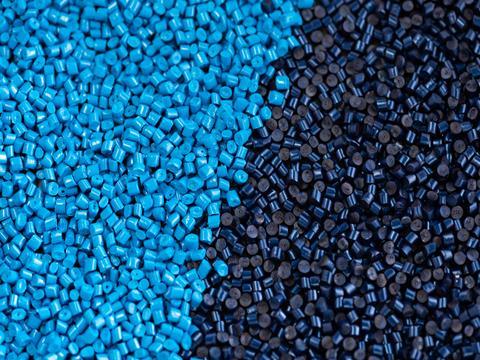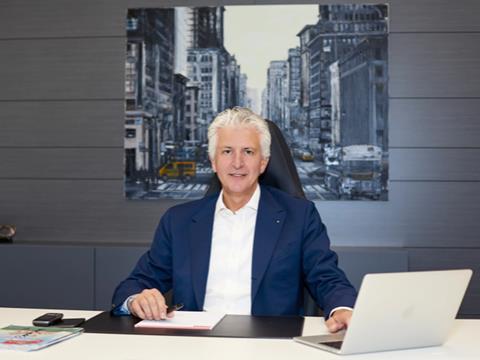
The record high prices that resulted from the shortages of raw materials in the past year are continuing to have a significant impact on plastic converters in Europe. Renato Zelcher, president of EuPC- a trade body representing European plastic converters- discusses the issues that the industry has been facing in the past months and outlines the current situation.
Can you outline for our readers the issues that the European raw materials market has been facing following the COVID crisis?
We as EuPC represent the plastic converting industry and I can outline the issues we faced from our perspective. Our sector is composed of 50.000 converting companies, mainly SMEs, in Europe and the scenario varies from sector to sector. The need to apply severe lockdowns to counter the spread of the virus had as a side effect a collapse of GDP as never seen before and industry sectors have reacted in different ways.
In the world of plastics converters, the packaging sector for food, beverages, personal care and hygiene, and of course for medical products, has continued to work without any stops. They even experienced a very high demand with some peaks linked to the emergency situation and to the compulsive purchases of consumers who recognized the importance of packaging in terms of safety and protection.
Other sectors such as automotive, construction and fashion, to name a few, have instead experienced a drop in demand, which has led to a drastic reduction in production and in many cases to the closure of factories for prolonged periods. In general, all have had serious problems related to logistics and the restriction of the free circulation of goods within the European community.
On the raw materials side, the situation in 2020 was adequate in terms of availability and prices. In fact, all the quotations remained at a very low level for most of the year while towards the end of 2020 / beginning of 2021 we entered the perfect storm with an unprecedented shortage of polymer and additives that consequently led to all-time record high prices.

There are many reasons for this. The easing of lockdowns and the very strong demand in Asian countries coincided with the slowdown in European production due to numerous stops for Forces Majeures and maintenance that could not be done in 2020. In addition, the Texas’ winter storm Uri stopped production for a few weeks in one of the world largest industrial hubs for the production of polymers and derivatives.
Surveys among plastic converters in Europe have shown that more than 90% of the players in all member states have been negatively affected by this situation and many have been forced to reduce their production either because they could not get the material or because they could not pass on the price increases.
Have European suppliers caught up with the demand for raw materials? Have the shortages continued and, if so, what has been the effect of that on the supply and prices of raw materials?
The situation has certainly improved compared to the past months, but we are still far from a concept of normality. Product availability is less critical, but on the other hand the great problem is now the logistics- difficult to find trucks and even more to find containers.
For these reasons, procurement continues to be difficult, especially for some grades, and prices remain at very high levels.
Have plastic manufacturers recovered from the shortages and rising prices of raw materials?
The first months of 2021 have been very critical for all the actors in the plastics industry. The huge increase that has been experienced was one of the most extreme ever seen. In less than 6 months the price of the raw material has doubled and for certain products the increase was even higher.
In this scenario, it has been very hard for converters to manage the situation- difficult to get the needed volume and transfer the price increases through the value chain- and this has forced many companies to absorb and/or anticipate in great part these huge increases. Now, the situation is getting better on the supply side, and we expect it will slowly normalize.
Are European suppliers still declaring Force Majeure cases at the pace that they had been in the past few months?
A Force Majeure declaration should be something exceptional but in the past months we experienced a great number either in a row or at the same time from different suppliers. Many of them have now been resolved and we hope that the FM season is over. It nonetheless remains the case that polymer prices are, in most cases, higher than they have ever been with an exceptional level of Forces Majeures by historic standards and margins on polymerisation higher than they have ever been before.
Looking ahead, what are your predictions for the market in the coming months?
After what we have experienced in the last 18 months it is more difficult than ever to make predictions, the pandemic has taught us how quickly things can change, and this will also have a certain impact on the way of doing business in the future.
Medium term, the GDP growth expectations and all economical indexes look positive, and we expect demand to remain good as long as we manage to keep the Covid-19 under control.
As far as the prices are concerned, we have seen a huge rise in all raw material, not only plastics, and this will inevitably lead to an inflation increase. In the next month we’ll learn if this is a new normal or just another big bubble that sooner or later will deflate.
















